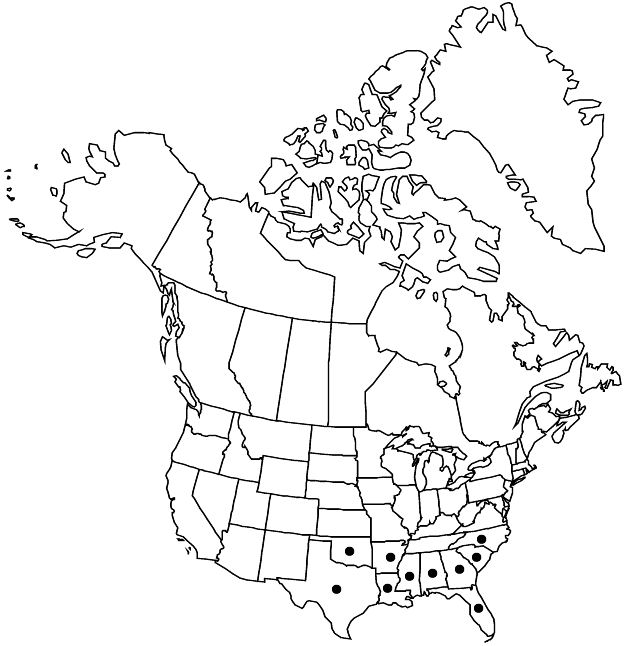Viola villosa
Fl. Carol., 219. 1788.
Plants perennial, acaulescent, not stoloniferous, 5–15 cm; rhizome thick, fleshy. Leaves basal, 4–9, prostrate to ascending; stipules linear-lanceolate, margins entire, apex acute; petiole 3–10 cm, densely pubescent; blade unlobed, reniform or ovate to elliptic, 1–8 × 1–5.5 cm, base cordate, margins serrate, ciliate, apex rounded to acute, mucronulate, surfaces densely pubescent. Peduncles 4–10 cm, puberulent. Flowers: sepals lanceolate to ovate, margins ciliate, auricles 1–2 mm; petals light to dark blue-violet on both surfaces, lower 3 white basally and dark violet-veined, lateral 2 bearded, spur sometimes bearded, lowest 10–20 mm, spur usually white, gibbous, 2–3 mm; style head beardless; cleistogamous flowers on ascending to erect peduncles. Capsules ellipsoid, 6–10 mm, glabrous. Seeds beige, mottled to bronze, or dark brown, 1.5–2 mm. 2n = 54.
Phenology: Flowering Apr–Jun.
Habitat: Sandy, pine-oak and pine-oak-hickory woods and disturbed ground
Elevation: 10–300 m
Distribution

Ala., Ark., Fla., Ga., La., Miss., N.C., Okla., S.C., Tex.
Discussion
Much of the foliage of Viola villosa remains green throughout the winter (V. B. Baird 1942).
Selected References
None.